The current world speed record on a public road was set January 28th, 1938 by Rudolf Caracciola in the Mercedes-Benz W 125 Streamliner. For seventy-five years, the record-breaking 268.9 mph (432.7 kmh) run made on the A5 Autobahn between Frankfurt and Darmstadt has stood the test of time (and sanity).
Rudolf Caracciola, who at that time was the lead racing driver for Mercedes-Benz, achieved the record by hitting a speed of 268.862 mph (432.692 kmh) over one kilometre with a flying start.
In addition, the existing record over the flying mile was also set at 268.65 mph (432.36 kmh). These figures represent the averages from two runs made in opposite directions.
For this top speed run, the Mercedes-Benz W 125 record-breaking car made use of an aerodynamically optimised body. Streamlined racing cars were not unusual at the time: Mercedes-Benz also successfully made use of them in circuit races.
For the record runs in January 1938, the record-breaking car – which was based on the all-conquering W 125 Silver Arrow – was not only equipped with a specially optimised 5.5-liter twelve-cylinder engine with two superchargers producing 736 hp, but also featured a flat, completely covered body with wedge-shaped, tapered tail end. Using wind tunnel measurements, the engineers reduced the aerodynamic drag to a sensational Cd value of 0.157. This included using a radically scaled-down air intake on the front end. As a result, the record-breaking car only “breathed in” – through two small openings – the amount of air required for the 5.6-litre V12 MD 25 DAB/3-type engine to work. Engine cooling, on the other hand, was achieved without using fresh air: instead the radiator was embedded in a 500-litre chest filled with ice and water.
The record attempts came to a sad end on the same day when racing great Bernd Rosemeyer lost his life while making a world speed record attempt for Auto Union. The 16-cylinder engine streamlined Auto Union Type C went into a skid at more than 250 mph and Rosemeyer was killed in the ensuing crash.
Michael Bock, Head of Mercedes-Benz Classic, commented, “Time and again our visitors talk about the spectacular presentation of the Mercedes-Benz W 125 record-breaking car, which is hanging on a vertical wall. Together with six other record-breaking vehicles, the streamlined car adds the impressive finishing touch to the high-bank curve in Legend Room 7‚ ‘Silver Arrows – Races and Records’. Acoustically, there is even an atmosphere similar to that found on the race track.”
The original vehicle is now showcased at the Mercedes-Benz Museum in Stuttgart, Germany.







(See Streamliners – Daimler-Benz Through The Decades)
[Source: Daimler AG]


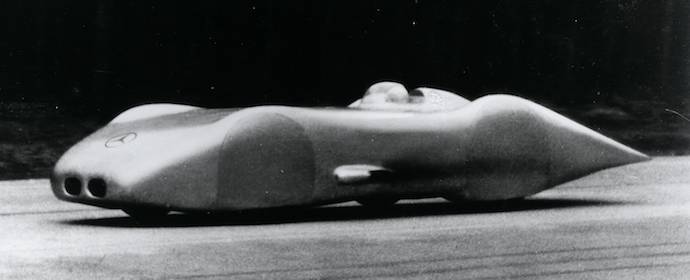
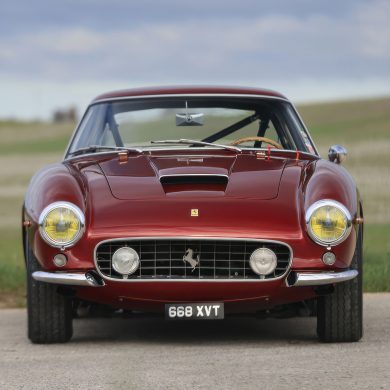
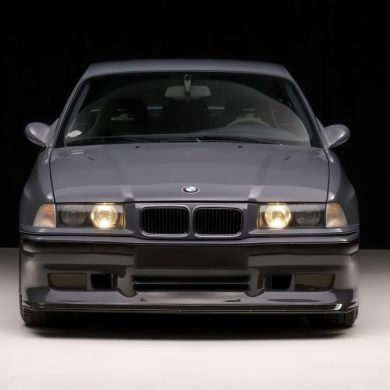

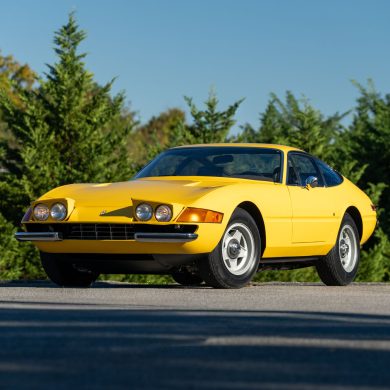
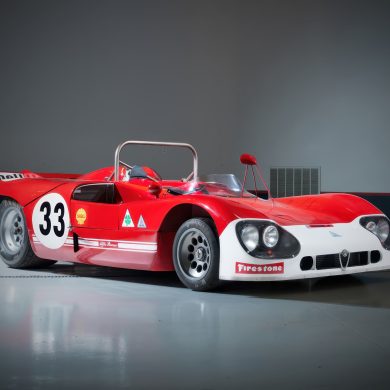
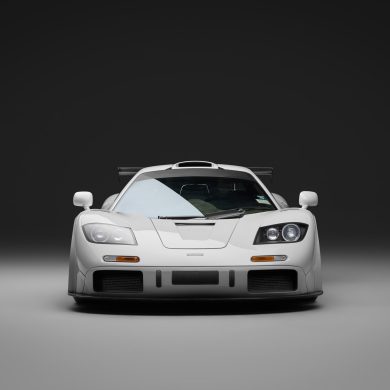


What a piece of ‘Art’…and achievement in aerodynamic engineering..!
form follows function…and brings results!
It looks like the aft end would produce a large amount of lift at speed. It appears to have an airfoil cross section with a downward trend, producing upward lift. This is particularly visible in the second and last image. I wonder if this in fact was the case.